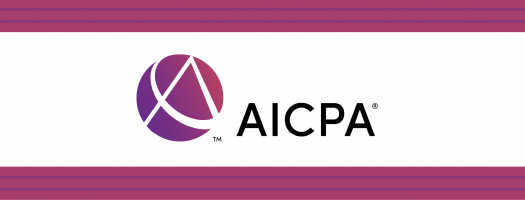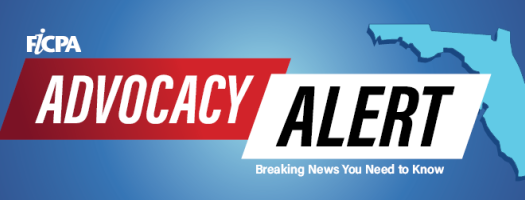
The Federal Trade Commission (FTC) recently amended the Safeguards Rule, driving stronger regulations – most of which took effect on June 9, 2023 – requiring covered financial institutions to develop, implement, and maintain a written information security program (WISP) with administrative, technical, and physical safeguards to protect customer information. It defines a "financial institution" as any business that engages in financial activity, meaning CPA and accounting firms must comply with the new laws.
This information supports CPAs/Accountants in understanding how to better comply with the FTC’s new guidance by understanding the different types of protection and testing (such as Penetration Testing/Ethical Hacking) that are required to regularly monitor and assess the effectiveness of their firm's information security safeguards. Additionally, it will support understanding the new regulations and how to develop, implement, and maintain an information security program with administrative, technical, and physical safeguards to protect customer information. By learning the different types of protections and testing (Penetration Testing/Ethical Hacking) required, firms will then understand how to regularly monitor and assess the effectiveness of their information security safeguards beyond just the need to comply.
In an era of digital transformation and an increasingly interconnected business landscape, protecting sensitive customer information has never been more critical. Certified Public Accountants (CPAs) and accounting firms entrusted with vast amounts of confidential financial data face the dual challenge of complying with evolving regulations and safeguarding against sophisticated cyber threats. The FTC has recently issued new guidance that underscores the importance of robust information security safeguards, pushing CPAs and accountants to enhance their practices.
This information is a compass for CPAs and accountants navigating this complex terrain. It offers a comprehensive exploration of how to comply with the FTC's new guidance and exceed the minimum requirements by understanding the various layers of protection and testing. We delve into advanced methodologies such as Penetration Testing and Ethical Hacking, shedding light on their pivotal role in regularly monitoring and assessing information security safeguards' effectiveness.
Moreover, we demystify the intricacies of the new regulations, providing a roadmap for developing, implementing, and maintaining an information security program fortified with administrative, technical, and physical safeguards. Beyond compliance, we emphasize the strategic imperative of safeguarding customer information in an environment rife with cyber threats. By mastering the diverse facets of protection and testing, CPAs and accounting firms will meet regulatory obligations and fortify their data defenses, ensuring trust, integrity, and resilience in an ever-evolving digital landscape.
Under the FTC’s Safeguard Rule, CPAs/Accountants regularly monitor and assess the effectiveness of their firm's information security safeguards. Penetration Testing, commonly known as ethical hacking, involves an authorized attempt to gain unauthorized access to a computer system, application, or data. These "white hat hackers" aim to duplicate the strategies and actions of malicious attackers to expose and remedy weaknesses in an organization's IT infrastructure.
Penetration testing is a crucial cybersecurity practice that provides a proactive element that complements annual security audits. While security audits are essential for assessing compliance and identifying potential vulnerabilities, penetration testing takes a more hands-on approach by actively attempting to exploit those vulnerabilities to determine their real-world impact.
Here's how penetration testing complements annual security audits:
Identifying Vulnerabilities
Security audits typically involve a review of policies, procedures, and configurations to identify potential vulnerabilities in an organization's IT infrastructure. Penetration testing goes further by actively seeking out vulnerabilities through simulated attacks. This proactive approach helps discover vulnerabilities that might be missed during a routine audit.
Real-World Testing
Penetration testing mimics the tactics of real attackers, attempting to breach systems and networks just as malicious hackers would. This real-world testing provides a practical assessment of an organization's security posture, whereas audits often rely on documentation and interviews.
Risk Assessment
Penetration testing not only identifies vulnerabilities but also assesses the potential impact of these vulnerabilities when exploited. This helps organizations prioritize their security by focusing on the most critical risks. Audits, on the other hand, may not always provide such a detailed risk assessment.
Testing Security Controls
Penetration testing evaluates the effectiveness of security controls and incident response mechanisms. It tests how well these controls can withstand actual attacks. In contrast, security audits may focus more on policy adherence and may not adequately assess the operational effectiveness of controls.
Timeliness
Annual security audits provide a point-in-time snapshot of an organization's security posture. However, cyber threats evolve rapidly, and new vulnerabilities emerge continuously. Penetration testing can be conducted more frequently, allowing organizations to adapt to changing threats and technologies in a timely manner.
Compliance Validation
Penetration testing can help validate the effectiveness of security measures required by regulatory standards and industry best practices. This can be especially important for organizations subject to strict compliance requirements.
Incident Response Preparation
Penetration testing can also serve as an opportunity to test an organization's incident response plan. It helps organizations understand how well they can detect, respond to, and mitigate security incidents in real time.
Developing, implementing, and maintaining an effective information security program with administrative, technical, and physical safeguards to protect customer information is crucial for organizations today.
This process involves several key steps:
Assessment and Planning
Begin by assessing your organization's current security posture and identifying the types of customer information you collect, process, and store. Determine the relevant legal and regulatory requirements (e.g., GDPR, HIPAA, etc.) that apply to your firm and location. Establish a security team or designate responsible individuals to oversee the program.
Policy and Procedure Development
Develop comprehensive information security policies and procedures that cover data classification, access controls, encryption, incident response, and more. Ensure that these policies align with industry standards.
Risk Assessment
Conduct a thorough risk assessment to identify vulnerabilities and threats to customer information. This includes assessing both internal and external risks. Prioritize risks based on their potential impact and likelihood and develop mitigation plans.
Access Control and Authentication
Implement strong access controls, limiting access to customer information on a need-to-know basis. Utilize multi-factor authentication (MFA) to enhance user authentication.
Data Encryption
Encrypt customer data both in transit and at rest to protect it from unauthorized access or theft. Implement robust encryption protocols like TLS for data in transit and strong encryption algorithms for data at rest.
Security Awareness Training
Train employees on security best practices and make them aware of their role in safeguarding customer information. Conduct regular security awareness programs and tests to reinforce good security behaviors.
Incident Response Plan
Develop a comprehensive incident response plan to promptly address data breaches or security incidents. Establish clear procedures for reporting and responding to security incidents, including notifying affected customers and regulatory authorities when necessary.
Physical Security Measures
Implement physical safeguards such as secure access controls, surveillance, and alarm systems to protect customer information stored in physical formats (e.g., paper records). Ensure that data centers and server rooms are secure and monitored.
Monitoring and Auditing
Employ security monitoring tools to detect suspicious activities and potential breaches. Conduct regular security audits and assessments to ensure ongoing compliance with policies and procedures.
Documentation and Reporting
Maintain thorough documentation of security policies, procedures, risk assessments, and incident reports. Report security incidents and breaches as required by regulations and notify affected customers promptly.
Continuous Improvement
Review and update your information security program to adapt to evolving threats and technologies. Stay informed about emerging security risks and implement necessary changes.
Third-Party Assessments
If you use third-party vendors with access to customer information, ensure they meet security standards and regularly assess their security practices.
Developing, implementing, and maintaining an information security program with administrative, technical, and physical safeguards is an ongoing process that requires commitment, vigilance, and adaptability. Organizations can better protect customer information and maintain trust in an increasingly data-driven world by following these steps and staying attuned to the ever-changing threat landscape.
Companies should regularly monitor and assess the effectiveness of their information security safeguards for many reasons beyond mere compliance with regulations and standards.
These reasons are crucial for safeguarding their data, reputation, and overall business continuity:
Dynamic Threat Landscape
The cybersecurity landscape continually evolves, with hackers developing new attack methods and exploiting emerging vulnerabilities. Relying solely on static compliance requirements can leave an organization vulnerable to these constantly changing threats. Regular monitoring and assessments ensure that security measures are up-to-date and resilient against evolving attack vectors.
Proactive Threat Mitigation
Waiting for a compliance audit or a security breach to identify weaknesses is a reactive approach that can be costly and damaging. Regular assessments allow companies to proactively identify vulnerabilities and security gaps, enabling them to address these issues before malicious actors exploit them.
Effective Incident Response
Timely detection and response to security incidents are crucial for minimizing the impact of a breach. Regular assessments help organizations fine-tune their incident response plans, ensuring they can quickly and effectively respond to security incidents, thereby reducing downtime and damage.
Data Protection and Trust
Beyond compliance, companies have a moral and ethical obligation to protect their customers' and stakeholders' sensitive information. Demonstrating a solid commitment to data protection through continuous monitoring and assessments helps maintain trust, which is especially critical in industries that rely on customer confidence.
Business Continuity
Cyberattacks can disrupt operations, leading to financial losses and reputational damage. Adequate security measures, validated through regular assessments, help ensure business continuity by reducing the likelihood and impact of security incidents.
Cost-Efficiency
Addressing security vulnerabilities early in their lifecycle is often more cost-effective than dealing with the aftermath of a breach. Data breaches' financial and reputational costs can be substantial, far exceeding the investment in regular security assessments.
Competitive Advantage
Companies that prioritize security not only protect their assets but can also gain a competitive edge. Customers and partners are more likely to trust organizations prioritizing data protection and cybersecurity, potentially leading to increased business opportunities.
Adapting to Regulatory Changes
Data protection regulations and cybersecurity standards are subject to changes and updates. Regular assessments ensure that security measures comply with current legal requirements, reducing the risk of non-compliance penalties.
Third-Party Relationships
Many companies collaborate with third-party vendors and partners. Regular security assessments can verify that these third parties also adhere to necessary security standards, safeguarding the organization against vulnerabilities introduced by these relationships.
Cultural Emphasis on Security
Regular monitoring and assessment contribute to building a culture of security within an organization. Employees become more aware of security risks and their role in mitigating them, making security a shared responsibility.
While compliance is a crucial starting point, it should not be the sole focus of an organization's security efforts. Regularly monitoring and assessing the effectiveness of information security safeguards are essential for staying ahead of emerging threats, proactively addressing vulnerabilities, and maintaining trust with customers and stakeholders. An ongoing commitment to security helps protect sensitive data and contributes to the organization's long-term success and resilience in an increasingly digital and interconnected world.
The evolving landscape of data security and the recent guidance from the FTC underscores the critical need for CPAs and Accountants to go beyond mere compliance when safeguarding customer information. This article has shed light on the multifaceted approach essential for CPAs and firms in understanding and implementing comprehensive information security measures.
By comprehending the diverse types of protections and testing methods, such as Penetration Testing and Ethical Hacking, CPAs are better equipped to meet regulatory requirements and proactively secure sensitive data. The significance of developing, implementing, and maintaining an information security program with administrative, technical, and physical safeguards cannot be overstated. It is a box-checking exercise and a strategic imperative to safeguard clients' trust and uphold professional integrity.
Furthermore, staying informed about evolving regulations and continuously assessing the effectiveness of security safeguards is not just a regulatory obligation; it is a prudent business practice that can mitigate risks, enhance resilience, and bolster the competitive advantage of accounting firms.
In an era where data breaches are increasingly common, CPAs and accountants are pivotal in ensuring customer information's confidentiality, integrity, and availability. Embracing a proactive security mindset, adopting best practices, and leveraging advanced testing methodologies are essential for compliance and building a robust foundation for the future of accounting in a digital age.
Christophe Reglat is President/CEO of Coaxis Hosting, an endorsed program for the FICPA. Coaxis provides CPA firms with an affordable Compliance Portal designed to create and managed the FTC’s required Written Information Security Program (WISP) and Continuous Penetration Testing. For more information call 850-391-1022 or email lisa.bryant@coaxissolutions.com


